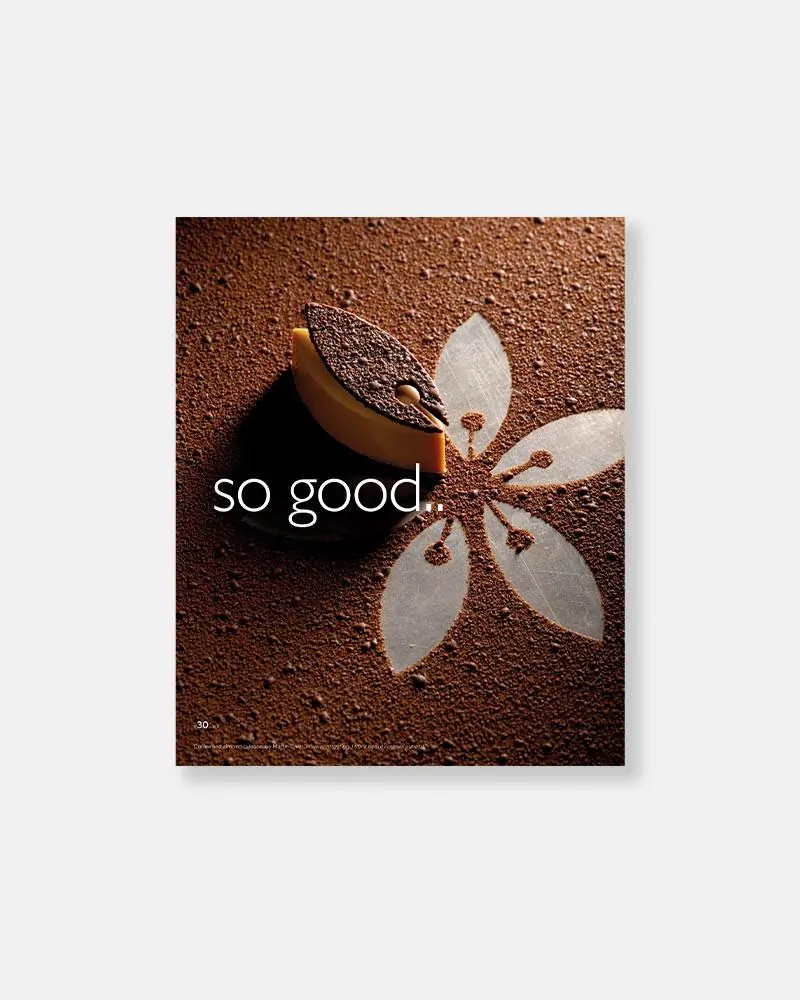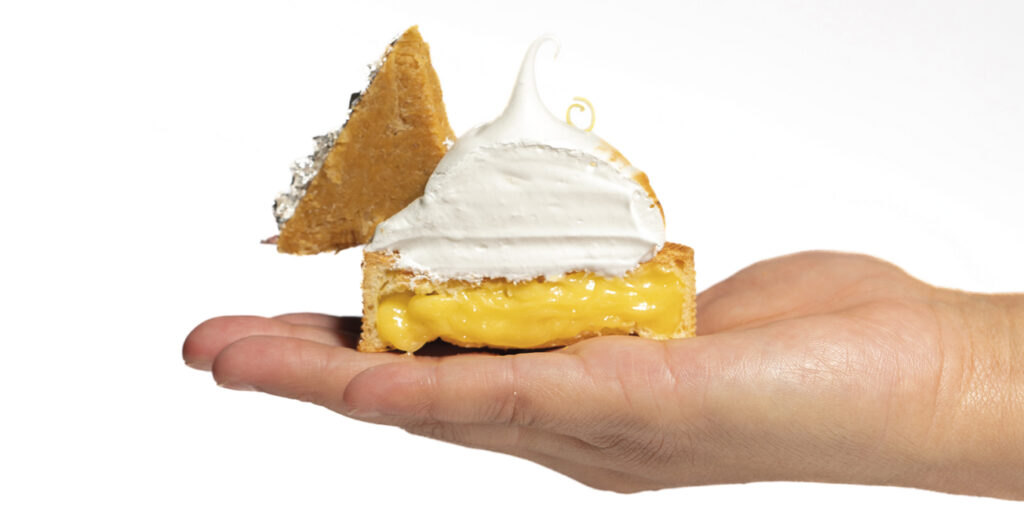Tejasvi Chandela was born in India, but trained at Le Cordon Bleu Paris. At only 22 years old, she returned to her native Jaipur to open Dzurt, the first pastry establishment in this town of more than three million inhabitants, with the idea of offering traditional Indian pastries with European techniques.
In so good.. magazine 30, the chef, in addition to explaining what it is like to be a woman and make pastries in her country, shows the step-by-step instructions of some recipes that can be tasted in her establishment.
The potential of Mithai or traditional Indian pastry

The richness of Indian gastronomy is undoubted. Not only does it have an infinite number of interesting ingredients in terms of aroma and flavor, but its tradition is also nourished by a vast volume of recipes, full of particularities depending on the region. And the sweet world is no stranger to that wealth. The traditional pastry products of this country are grouped into what they call “mithai”, recipes that stand out for their sweetness, their technical complexity, and their historical value. “The mithai are very technical and currently add a special element to my creations. I feel that domestic patisserie has not been promoted globally and has a lot of potential to be at the forefront. India is full of untapped treasures such as spices, teas, coffees, herbs, botanicals, fruits, and more. These are ingredients that go very well with pastry and chocolate, and I enjoy experimenting with them. The sugar work you see in India in terms of pastry is so unique and technical that it is mind-blowing,” she assures.
Five traditional Indian products with European techniques
For Chandela, “taking the mithai, what is mine and what comes naturally to me, and marrying it with what I have learned as a pastry chef, is very fun and at the same time challenging. It requires a lot of research because the process of coming up with a cake that is balanced in terms of technique and less sweet taste is complicated. Most mithai have a base of sugar, nuts, fat (ghee or oil), aromatic ingredients, and flour. These are elements that make sense together when combined with European pastries.”
Below we share five products that show what these interesting pastry proposal consists of:
Mango & Pistachio Petha Tart
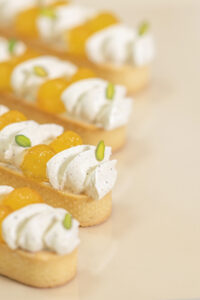
A long time ago, when the Mughal emperor Shah Jahan ruled Agra, he asked his chefs to make a unique dessert that was as pure and white as the majestic “Taj Mahal”. The royal chefs worked hard and came up with an invention called Petha. It comprises ingredients such as a variety of pumpkin called petha, sugar, and chuna (limestone water). Even though the ingredients are simple, the technique of making it is complicated and takes about two days to make it. It looks very similar to jujups.
Discover the recipe in so good.. magazine 30
Patisa au citron choux
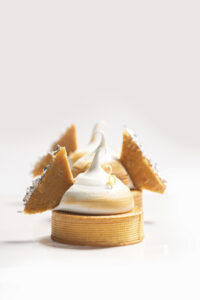
In recent times, I have been experimenting with a mithai such as Soan Papdi, also called patisa.It is traditionally cube-shaped or served as flakes. It has a crunchy, flaky texture and is usually offered to friends and family on a festival called ‘Diwali’, or the Festival of Lights. Thin strands of caramel mixed with chickpea flour and ghee add an interesting flavor note. Here it brings a textural counterpoint to a European dough – choux.
Discover the recipe in so good.. magazine 30
Imarti & Jamun
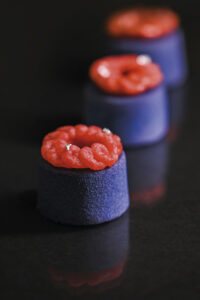
Imarti are popular Indian sweets made by frying a lentil dough (urad dal) which is then soaked in a syrup with cardamom and rose. Not only is it pretty, but it also stands out for its taste. The urad dal are soaked in water for a few hours and stone ground to a fine dough. It is then fried in ghee (a unique Indian clarified butter), although you can opt for other oils. As with funnel cakes, the batter is poured over the oil forming geometric patterns. Often a small ring is formed in the middle. On this occasion, I have piped this batter forming a sort of curly bracelet. As for the Jamun, it is a fruit indigenous to India, commonly eaten with a sprinkle of black salt.
Discover the recipe in so good.. magazine 30
Pistachio and Lamington Soan Papri
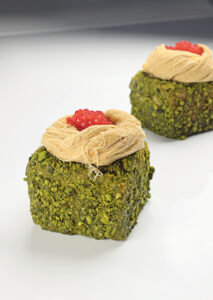
I have long wanted to experiment with Soan Papri, a mithai that is traditionally cube-shaped or served as flakes. It has a crunchy, flaky texture and is often offered to friends and family at a festival called “Diwali,” the festival of lights. The fine threads of caramel mixed with chickpea flour and ghee provide an interesting flavor note, so I combine them with the Australian “Lamington” sponge cake and with pistachios to balance the overall sweetness. I finish it by decorating it with rose caviar because in India this flower is usually combined with pistachio.
Discover the recipe in Dulcypas 498
Ghevar Clementine
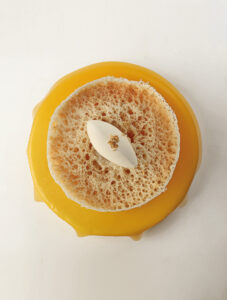
Every year when I go to EPGB, I try to incorporate flavors and techniques from my side of the world, since it is something unique, fresh, and new. This time I chose the two most technical Indian mithai that exist. Their preparation is complex, but they are delicious and effective, with a wow factor when you see how they are made. This Clementina Ghevar occurred to me while I was walking through the old part of Jaipur. I saw a lot of ghevars stacked in a shop and thought it appropriate to use it as a cake crown as it has the texture of a thin wafer with a honeycomb-like visual feel. Ghevar is traditionally made in Rajasthan for a festival called “Teej”. Some of the mithaiwalas or halvais (chefs who make mithai) add a topping of rabri (which is basically a combination of reduced milk along with sugar, cardamom, and saffron). I decided to create a mousse with the flavors of the rabri and added a veil of clementine on top to balance the sweetness of the mousse with almond dacquoise. In addition to its acidity, the clementine provides chromatic contrast with the ghevar.
Discover the recipe in our Spanish magazine Dulcypas 498
